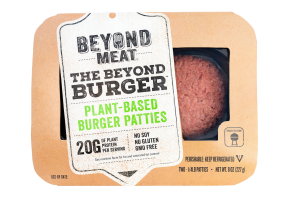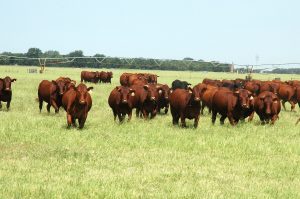Introduction
Beyond Meat Inc., a company producing plant-based meat has submitted an application for an initial public offering (IPO) in the US. We have reviewed its prospectus and noted what makes Beyond Meat burger unique.

Overview
Beyond Meat is one the fastest growing food companies in the US, offering a portfolio of revolutionary plant-based meat. It builds meat directly from plant, an innovation that enables consumers to experience the taste, texture and other sensory attributes of popular animal-based products while enjoying the nutritional benefits of eating plant-based meat products.
Its products are designed to appeal to a broad range of customers, including those who typically eat animal-based meat, which is worth US$1.4 trillion globally. According to the company, it had developed three plant-based product platforms that align with the largest meat categories: beef, pork and poultry. It creates plant-based products using proprietary scientific processes that determine the architecture of the animal-based meat the company seeks to replicate and then assemble it using plant-derived amino acids, lipids, trace minerals and water. The company is focusing to improve its products so that they are, to the human sensory system, indistinguishable from their animal-based counterparts.
Its flagship product is The Beyond Burger, the world’s first 100 per cent plant –based burger merchandised in the meat case of US grocery stores. The Beyond Burger is designed to look, cook and taste like traditional ground beef. The products are currently available is about 28,000 points of distribution primarily in the US as well as several other countries.
Unique Approach to market its Products
Instead of marketing and merchandising The Beyond Burger to vegans and vegetarians (who represent less than 5 per cent of the US population), it requests that its products to be sold in the meat case at grocery stores where meat-loving customers are accustomed to shopping for their proteins. The marketing approach has helped drive greater brand awareness with its customers.
The Beyond Burger is now carried by approximately 11,000 grocery stores in the US. Its products are also now carried by 11,000 restaurants.
The Market for Meat
The company notes that the meat industry is large and global. This meat industry is comprised of fresh and packaged animal-based meat for human consumption. According to data from Fitch Solution Macro Research, the meat industry is the largest category in food and in 2017 generated estimated sales across retail and foodservice channels of about US$270 billion in the US and about US$1,400 million globally.
The company believes that consumer awareness of the perceived negative health, environmental and animal-welfare impacts of animal-based consumption has resulted in a surge in demand for viable plant-based protein alternatives. In the US, the current size of the non-dairy milk category is equivalent to approximately 13 per cent of the size of the milk category. According to Mintel report, the non-dairy milk category in the US was estimated to be US$2.0 million in 2017. The success of the plant-based dairy industry was based on a strategy of creating plant-based dairy products that tasted better than previous non-dairy substitutes, packaged and merchandised adjacent to their dairy equivalent.
The company is applying the same strategy to the plant-based meat category. It expects to grow to be at least the same proportion of the approximately US$ 270 billion meat category in the US, which over time would represent a category size of US$35 billion in the US.
Financials
The company reported that it had experienced net losses since its inception in 2009. In the years ended December 31st, 2016 and 2017, it incurred net losses of US$25.1 million and US$30.4 million, respectively. In the same period, the company recorded revenue of US$16.18 million in 2016 and US$32.58 million, respectively.
The company would be raising additional capital through an IPO.
Conclusion
We support the efforts of the company to develop plant-based meat that tastes better than the meat from animals. The new wealthy consumers in Malaysia, China and Indonesia (with the exception of India) are consuming more meat steaks and burgers, which are imported from Australia, Brazil and the US. This need to supply more animal meat is putting pressure on existing pastures and grasslands for rearing of cattle. Scientists have reported that the raising of cattle for meat and milk would lead to emission of methane to the atmosphere.
We hope in the near future, patrons in high-end restaurants in Asia would be eating plant-based meat without realizing it.
Quick Data on Cattle Inventory

Based on data published by http://beef2live.com, according to the FAO, the world has 1,468 million head of cattle. Brazil has the largest cattle inventory at 211. 76 million, followed by India with 189 million, China with 113.5 million, the US with 89.3 million, Ethiopia at 54 million, Argentina with 51.1 million and Sudan with 41.9 million. About 104 countries have a cattle inventory in excess of 1 million heads.